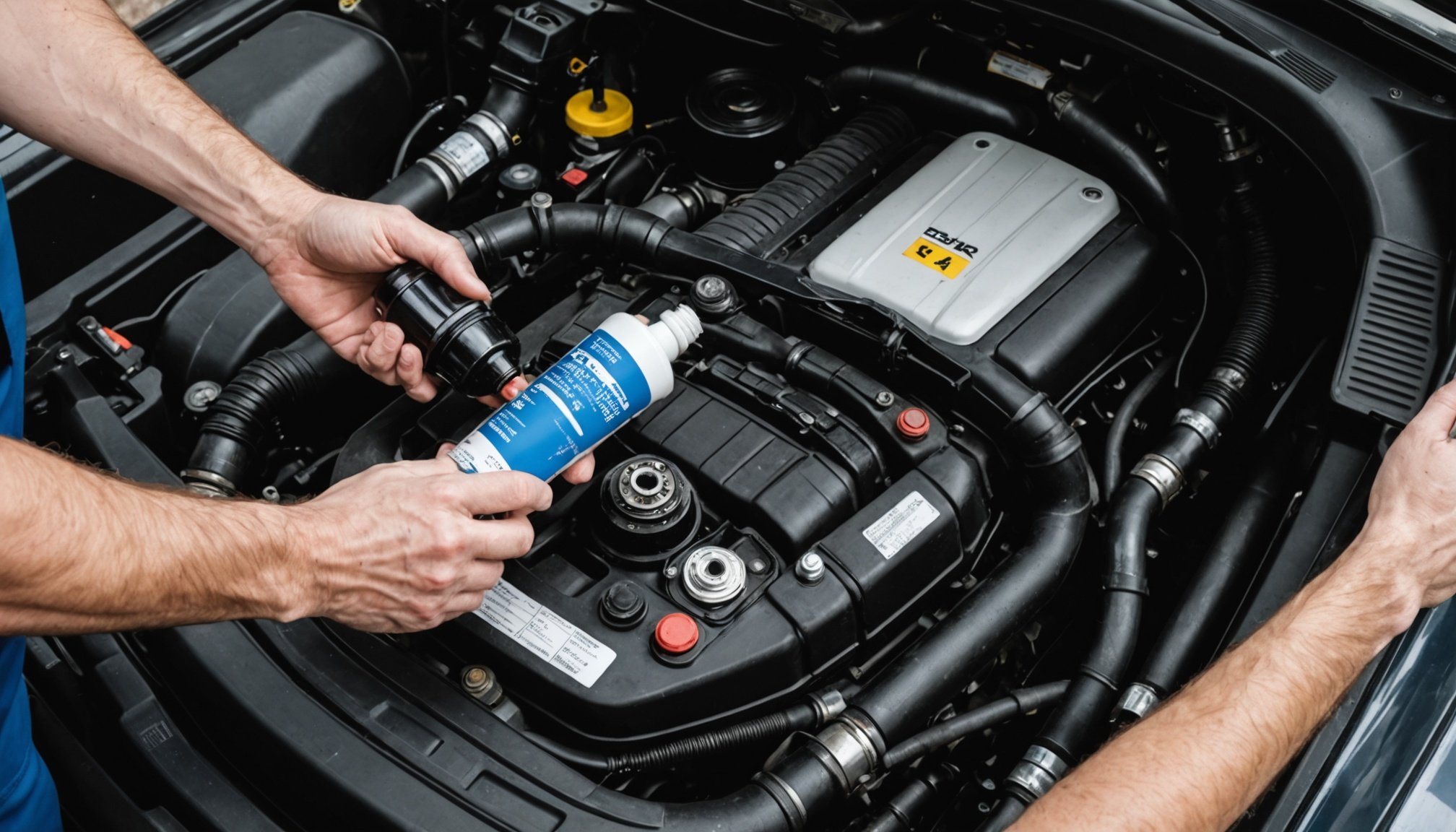Taking care of your car can sometimes feel like a daunting task, especially when it involves more technical aspects such as the differential fluid. Some of you may feel perfectly comfortable under the hood of your car, while others may feel more apprehensive. Either way, it’s crucial to keep your car in good shape, and this includes regularly checking and, if necessary, changing your car’s differential fluid.
Understanding the Importance of Differential Fluid
Before we delve into the specifics of how to change your differential fluid, let’s go over its importance. The differential is a component of your car that distributes engine power to the wheels. It allows your wheels to turn at different speeds, which is crucial when you’re navigating turns.
Additional reading : How can you modify your car’s suspension for better handling on UK’s country roads?
The differential relies on a fluid, known as differential fluid or gear oil, to keep its gears cool and running smoothly. Over time, this fluid can degrade, which can lead to increased friction, heat, and wear and tear on your car’s differential. This can lead to a decline in your car’s performance and even damage.
Locating the Differential and Drain Plug
In the UK and other countries where cars drive on the left-hand side of the road, the differential will typically be located towards the rear of the car. Look for a round or oval-shaped metal housing – this is the differential.
Also read : How can you check if a used car has been in a previous accident?
The drain plug is located on the bottom of the differential. It’s usually a hex or square plug that you can remove with a wrench. Before you proceed, however, it’s crucial to also locate the fill plug. This plug is typically located towards the top of the differential.
Draining the Old Differential Fluid
Before you drain the fluid, make sure your car is on a flat and level surface. This will ensure you can drain out as much of the old fluid as possible.
To drain the fluid, you’ll need to remove the drain plug. You may need to use a bit of force, so be careful not to strip or damage the plug. Once the plug is removed, the old fluid will start to drain out.
Filling Up with New Differential Fluid
Once all the old fluid has been drained, and you’ve replaced the drain plug, it’s time to fill up with new fluid. The type of fluid you’ll need will depend on your car’s make and model, so check your owner’s manual or consult with a professional if you’re unsure.
To fill the differential, remove the fill plug and insert a fluid pump or squeeze bottle. Then, slowly pump the new fluid into the differential. Fill it until fluid begins to trickle out of the fill plug location.
Checking the Fluid Level and Sealing Everything Up
After filling the differential, it’s crucial to check the fluid level. You can do this by inserting your finger into the fill hole. The fluid should be right up to the bottom of the hole.
Once you’ve confirmed the fluid level, replace the fill plug and tighten it. Make sure it’s secure, but be careful not to overtighten and strip the plug.
Joining a Car Maintenance Forum
If you’re new to car maintenance, or if you encounter any issues during this process, don’t hesitate to seek help. Online car maintenance forums can be a valuable resource. Here, you can join discussions, reply to posts, or even get a quote for a professional service.
Remember, this guide is a general overview. Your car may have specific requirements or steps that need to be followed. Always refer to your car owner’s manual before performing any maintenance tasks.
Regular Maintenance and Future Changes
Regular maintenance is key to maintaining your car’s performance and longevity. As a general rule, you should check your car’s differential fluid every 30,000 to 50,000 miles. However, this can vary depending on your driving habits and the type of car you have, so consult your owner’s manual for specifics.
In summary, checking and refilling the differential fluid of a UK car involves several steps: locating the differential and drain plug, draining the old fluid, filling up with new fluid, checking the fluid level, and sealing everything up. It may seem like a lot, but with a bit of patience and practice, you can handle this task yourself. If you’re ever unsure or uncomfortable, don’t hesitate to seek professional help. After all, taking care of your car is a crucial part of being a car owner.
Remember, knowledge is power. The more you know about your car, the better equipped you’ll be to take care of it. Regularly checking and changing your differential fluid is a key part of this. So, don’t wait until problems arise – start taking proactive steps to maintain your car today.
The Difference Between Differential Fluid and Other Car Fluids
When it comes to car maintenance, it’s crucial to know the difference between the various fluids your car uses. We have previously discussed the importance of differential fluid or gear oil, but it’s equally important to understand how it differs from other car fluids like transmission fluid or engine oil.
Differential fluid is a specialized oil designed specifically for the differential component of your vehicle. Its primary function is to keep the gears inside the differential cool and lubricated, which is vital for your car’s performance and longevity. On the other hand, transmission fluid is used in the transmission to lubricate the gears and components, while engine oil is used in the engine to lubricate its moving parts.
Just like the other car fluids, differential fluid degrades over time and must be changed regularly. However, the frequency of differential fluid change is less compared to other fluids. As a rule of thumb, differential fluid should be checked and replaced every 30,000 to 50,000 miles, while engine oil requires change every 3,000 to 5,000 miles, and transmission fluid every 60,000 to 100,000 miles.
However, these numbers can vary depending on several factors like the car’s make and model, the driving conditions, and your driving habits. Therefore, it’s always best to consult your owner’s manual for the manufacturer’s recommendations.
Just as you wouldn’t use engine oil in your transmission, you shouldn’t use any other fluid in your differential other than the recommended gear oil. Using the wrong fluid can cause damage to your car’s components and negatively affect its performance.
Utilising Online Resources for Assistance
In the digital age, information is literally at our fingertips. Countless resources are available online to help car owners understand and perform basic car maintenance tasks. This includes checking and refilling the differential fluid in a UK car.
Online forums can be an excellent source of information. You can join these forums, engage in discussions, ask questions, and even reply to posts. You can also read through posts from other members, learn from their experiences, and even get a quote for professional services in your area. Forums also allow you to give and receive likes on posts, creating a supportive and interactive community.
YouTube is another valuable resource. Many mechanics and car enthusiasts post detailed video tutorials on car maintenance tasks, including how to check and refill differential fluid. These videos can provide a visual step-by-step guide, helping you understand the process better.
Despite these resources, if you’re still unsure or uncomfortable performing maintenance tasks on your car, it’s always best to seek professional help. There’s no harm in handing over your car’s maintenance to someone with more experience and knowledge. After all, the goal is to keep your car running smoothly and safely.
Conclusion
To sum up, understanding and maintaining your car’s differential fluid is a crucial aspect of car maintenance. It’s a task that may seem daunting, but with the right knowledge, tools, and a bit of patience, it’s a task that many car owners can handle themselves.
Regularly checking and changing your car’s differential fluid not only ensures optimum performance but also prevents potential damage and costly repairs in the future. Remember, it’s all about taking preventive measures rather than waiting for problems to occur.
Whether you choose to do it yourself or prefer to seek professional help, what matters is that you’re taking steps to maintain your car and ensure its longevity. As the old adage goes, ‘an ounce of prevention is worth a pound of cure.’ So here’s to many more miles of smooth, trouble-free driving!











